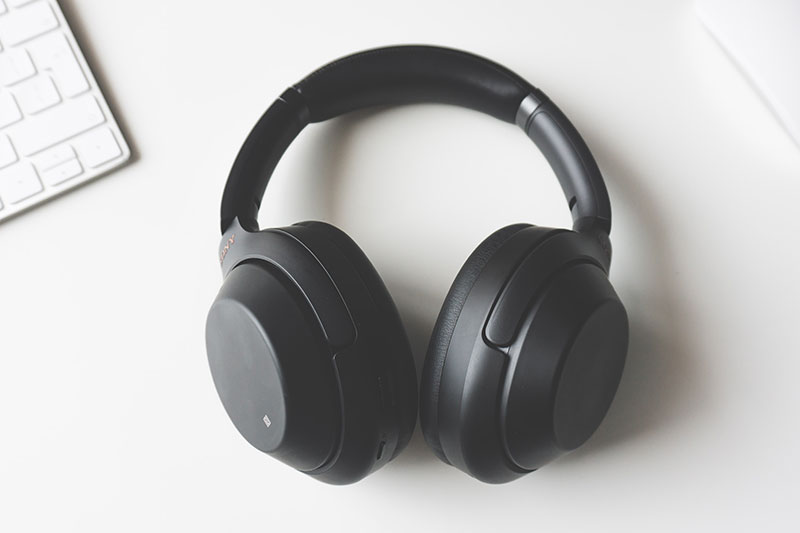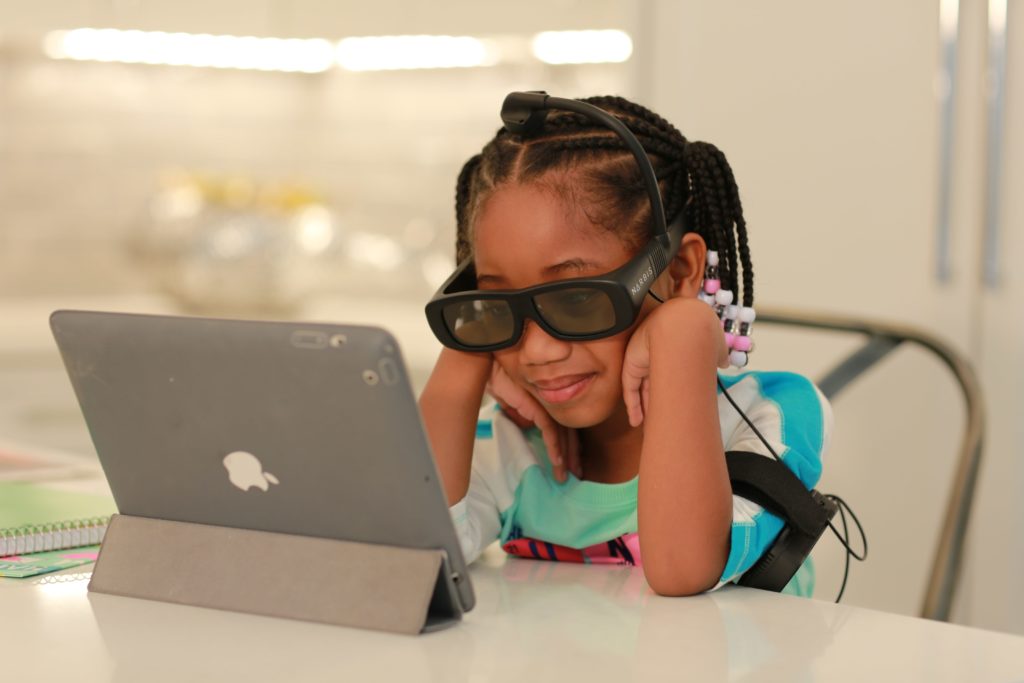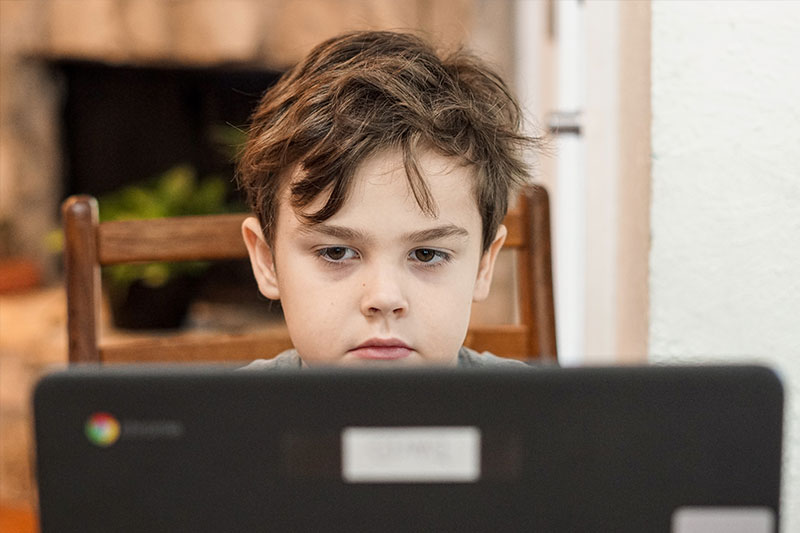As the dust starts to settle amidst the oddity that is the 2020 back-to-school season, parents are going to evaluate some of those recently purchased “must-have” back-to-school items.
We at Narbis have put together a list of those distance-learning “must-haves” that will help ease the daily struggle of coordinating Zooms and ensuring kids are paying attention to their virtual lessons:
- Bean bag chairs: your students’ cozy learning nooks.

For all at-home learning, whether it is a virtual classroom or good old-fashioned homework, having a routine in place is conducive to focus and productivity—especially for children with attention disorders such as ADHD. Your child might have been looking forward to getting that first desk or locker. Help make a bit of school at home go down a bit sweeter with a bean bag chair. Why? They’re cozy and provide back support as your child changes positions through the school day. Plus, who doesn’t love a bean-bag chair?
- A printer: those worksheets aren’t going to print themselves.

If your family has managed to go without a printer so far, we salute you. This school year might be the time to invest in a model sturdy enough to print off a coloring sheet or two. While programs to fill in coloring sheets online do exist, your child’s elementary school teacher might prefer the tactile experience of holding a crayon. Older students might find it easier to focus on reading assignments that are printed off rather than read on screen. (Plus, a chance to cut back on screen time might be refreshing.)
- The sound of silence: noise-cancelling headphones.

When multiple classes are going at once — that is, that of your middle schooler’s social studies class and kindergartener’s musical clapping session — the learning environment can get a bit discordant. Says Debbie Lopez, a longtime educator and community outreach director for education and test prep nonprofit Zivadream, “With distance learning comes distractions of being at home—siblings who are also distance learning, parents who are working from home, television, phone calls, music, dogs barking, neighbors playing in their pool, the list goes on and on.” Noise-cancelling headphones can help reduce that household distraction. Many models of noise-cancelling headphones have built-in microphones, so when it comes to question-and-answer time, your seventh-grader can respond without having his baby sister wailing in the background. Plus, they can be used during homework time to keep peaceful quiet all day long.
- Leave it hanging: a mask lanyard.

For those students whose school has adopted a hybrid in-person / virtual schedule, masks are yet another thing to add to the backpack in the morning. But as anyone who has been an elementary school student knows, children are prone to losing things. Help make mask-wearing a bit more palatable by buying a mask lanyard to coordinate with their outfits or feature their favorite superhero.
- For mind and body: a yoga mat.

On the virtual learning curriculum in thousands of schools this year: online physical education. Given the solitary nature of virtual learning, online dodgeball likely isn’t going to be among the lessons. Instead, expect at-home PE to take a form similar to the fitness apps you might have been using over the past several months, with yoga and calisthenics on the lineup. Whatever the activity, the soft, level surface of a yoga mat can help put some spring in your young athlete’s step. Added bonus: get another for yourself and use your child’s virtual gym class as an excuse to take a work break and do a family workout.
- A virtual math teacher.

Now, while the math teachers across the US are doing their best to help your scholars learn how to crunch the numbers, when it comes time for homework, remembering how to calculate that integral in calculus might prove to be a challenge for you, the parent. Getting through arithmetic flash cards Never fear: math apps are here. Get your elementary school student into the swing of things with Funbrain’s Math Baseball, which teaches and reinforces math skills for grades K-5. If mathematical equations in your household are a bit more towards the Advanced Placement level, the Aida Calculus App from educational publishing behemoth uses AI as a guide through those problem sets. Students either type in an equation or take a snapshot of their handwritten homework, and the app gives suggestions and feedback on each step of the problem in question. The app also includes supplementary material such as examples and videos of how calculus concepts apply in the real world, such as how to calculate the rate of change.
- A virtual video studio.

With virtual learning comes virtual projects. It’s hard to submit something made with posterboard and tempera paint online (and on the teacher’s side, no one in the empty classroom to show off student work). Suffice it to say that video editing is making its way into school curricula. Not unlike a news broadcast, Prezi Video allows students to putter with inserting graphics into your video feed while recording — and without the potential distraction of social media apps that allow for video filters.
- WiFi Issues? Turn your phone into a hotspot.

Multiple videoconferencing calls happening at once can be a drain on your household’s Internet bandwidth, with the apps in question reducing their streaming quality as a result. This can lead to feeds appearing pixelated, choppy sound quality, and frustration for all parties involved. Converting a phone into a mobile hotspot might just be the ticket to maximizing bandwidth. Product review site Reviewed has the details on how to create mobile hotspots across smartphone operating systems and mobile carriers. What’s more, a mobile hotspot might help you eke out that last bit of summer and bring that laptop with you to the beach or on the boat.
- Take your science lesson to the backyard.

Hannah Campbell, director of education at the Loggerhead Marinelife Center in Juno Beach, Florida, suggests this excuse for your kids to get some fresh air while learning some science:
the iNaturalist Backyard Bioblitz app. Users can upload their snaps of plants and animals, and the thousands of professional scientists and amateur enthusiasts who participate can help identify what’s what.
- Learn how to develop some focus.

Despite everyone’s best efforts, working and learning from home can mean more opportunities for distraction. Our Narbis neurofeedback smart glasses use a NASA-developed algorithm to change tint to alert when the wearer is losing focus. With just three 20-minute sessions per week, users can learn how to concentrate on work, helping to lessen homework time and learn how to stay on task.







